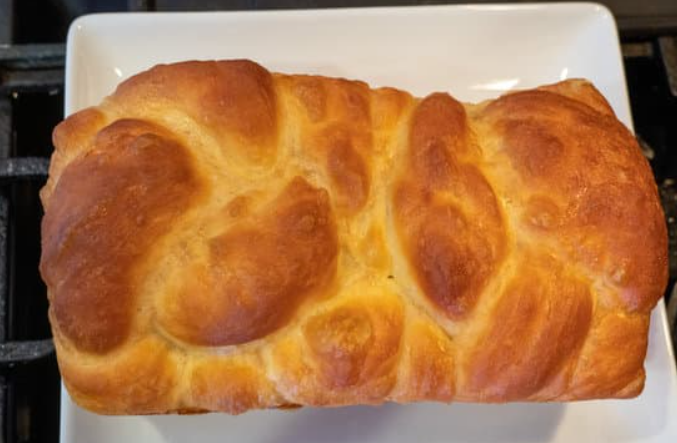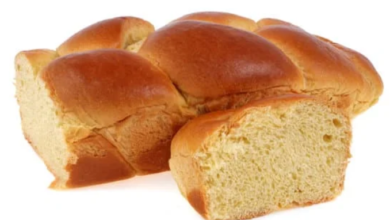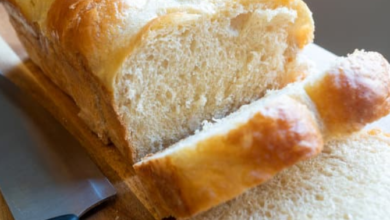Brioche mystery solved! Find out if it really does rise in the oven

What To Know
- The answer is a resounding yes, and understanding the process behind this culinary transformation is essential for home bakers and bread enthusiasts alike.
- As the dough enters the hot environment of the oven, the trapped carbon dioxide expands rapidly, further inflating the dough and creating the characteristic airy texture.
- Brioche’s rise in the oven is a culinary symphony, where the interplay of ingredients, fermentation, and heat creates a masterpiece of taste and texture.
Brioche, the delectable French bread known for its rich, buttery flavor and fluffy texture, has captivated taste buds worldwide. At its core lies a unique dough that requires a specific baking technique to achieve its signature rise. So, the question arises: does brioche rise in the oven? The answer is a resounding yes, and understanding the process behind this culinary transformation is essential for home bakers and bread enthusiasts alike.
The Science of Brioche’s Rise
The key to brioche’s exceptional rise lies in its dough composition. Brioche dough is enriched with butter, eggs, and milk, creating a high-fat and high-protein environment. When combined with yeast, a natural leavening agent, a complex fermentation process begins.
During fermentation, yeast consumes the sugars present in the dough, releasing carbon dioxide as a byproduct. These gas bubbles get trapped within the dough’s gluten network, forming pockets of air that cause the dough to expand and rise.
The Role of Oven Heat
While fermentation is crucial for brioche’s initial rise, the oven’s heat plays a vital role in completing the process. As the dough enters the hot environment of the oven, the trapped carbon dioxide expands rapidly, further inflating the dough and creating the characteristic airy texture.
The Importance of Steam
In addition to heat, steam also contributes to the rise of brioche. When water evaporates from the dough’s surface, it creates a humid environment within the oven. This steam prevents the dough from forming a crust too quickly, allowing it to continue rising and developing its fluffy interior.
Factors Affecting Brioche’s Rise
Several factors can influence the extent to which brioche rises in the oven:
- Dough Temperature: A warm dough will ferment more quickly, resulting in a better rise.
- Yeast Activity: Active yeast is essential for producing sufficient carbon dioxide.
- Kneading Time: Proper kneading develops the gluten network, providing a framework for the gas bubbles to expand.
- Oven Temperature: An optimal oven temperature of around 375°F (190°C) is ideal for brioche.
- Baking Time: The longer the brioche bakes, the more time it has to rise and develop its flavor.
Troubleshooting Tips for Brioche Rise
If your brioche does not rise as expected, consider the following troubleshooting tips:
- Check Yeast Activity: Ensure the yeast is fresh and active before using it.
- Proof the Dough: Allow the dough to rise in a warm place until doubled in size before baking.
- Knead Thoroughly: Develop the gluten network by kneading the dough for at least 10 minutes.
- Preheat the Oven: Preheat the oven to the correct temperature before placing the brioche inside.
- Bake for the Correct Time: Follow the recommended baking time for your recipe.
Final Note: A Culinary Symphony
Brioche’s rise in the oven is a culinary symphony, where the interplay of ingredients, fermentation, and heat creates a masterpiece of taste and texture. By understanding the science behind this process, home bakers can replicate the magic of this beloved French bread and indulge in its fluffy, buttery goodness.
What You Need to Know
1. Why does my brioche not rise enough?
- Check yeast activity, kneading time, dough temperature, and oven temperature.
2. How can I improve the rise of my brioche?
- Use active yeast, knead thoroughly, proof the dough, and bake at the optimal temperature.
3. What causes brioche to deflate after baking?
- Over-kneading, under-proofing, or baking at too high a temperature can cause deflation.
4. How can I prevent my brioche from burning on top?
- Cover the brioche with foil during the last few minutes of baking.
5. Can I make brioche without eggs?
- Yes, there are eggless brioche recipes available, but the texture may be slightly different.






